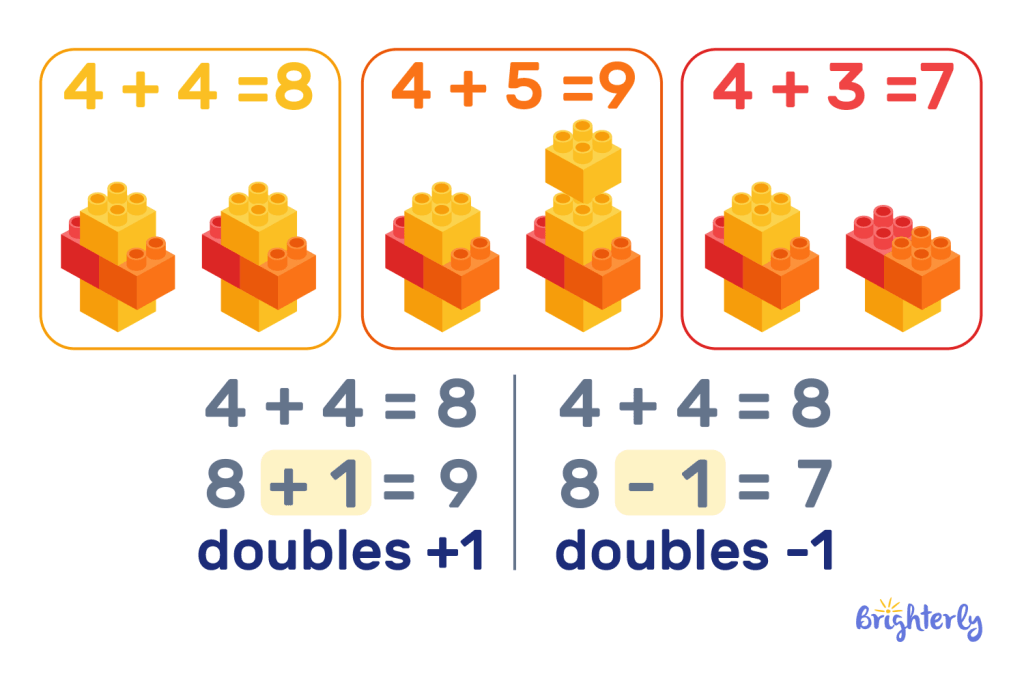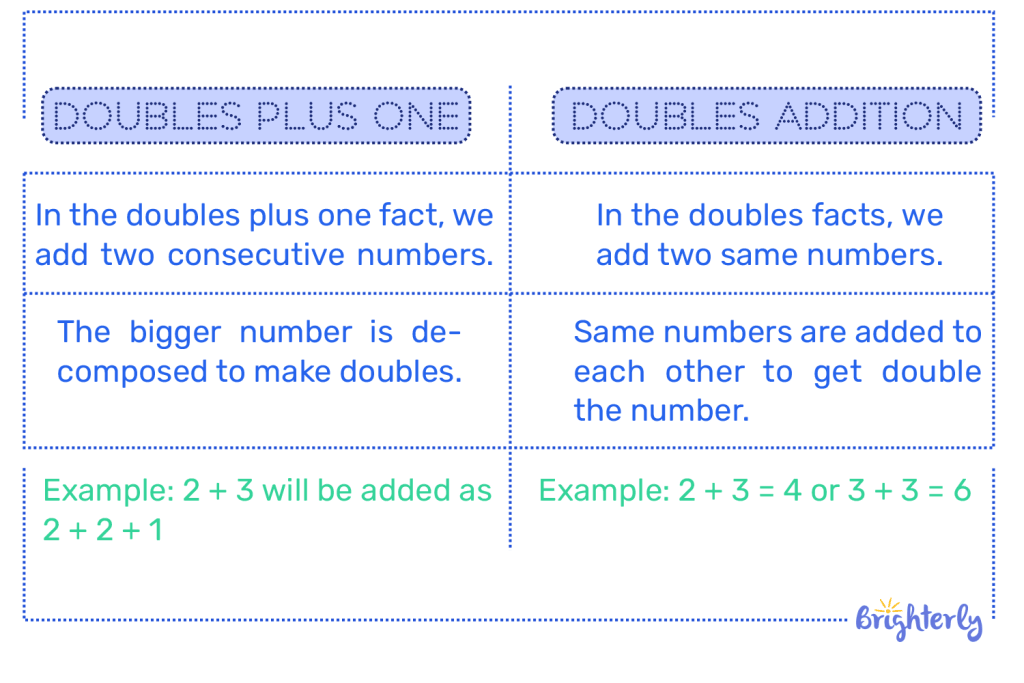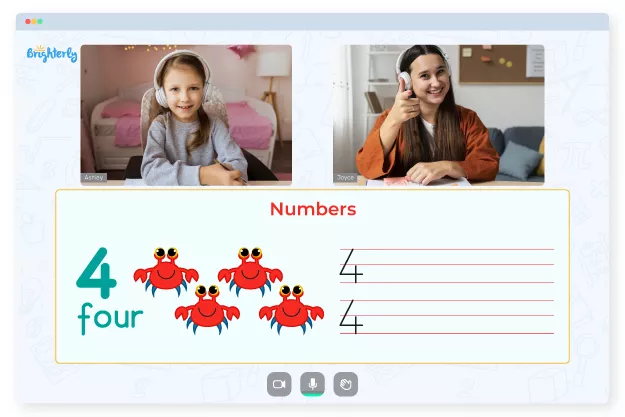Doubles Plus One – Definition With Examples
Updated on November 3, 2025
Here at Brighterly, we not only teach you about a range of math concepts, but we also teach you helpful methods that make math easier.
Today, we’ll look at the doubles plus one method of addition.
We’ll explore how to add numbers with the doubles plus one method and explore its difference to doubles addition. We’ll also share some solved math problems so you can see how to go about tackling these math questions, then give you practice questions to try out on your own.
Let’s look at this interesting and useful addition method.
How to add numbers with the doubles plus one method?
The doubles plus one method is a quick and easy way to add two consecutive numbers. Instead of trying to add one to the other, simply double the smaller number and then add one. This gives you the same result as adding two consecutive numbers.
To add with doubles plus one is called the doubles plus one method.
Let’s look at some doubles plus one examples. If you have 6 + 7 and want an easy way to solve this equation, follow these steps:
- Identify the smaller of your two numbers. Here, the smaller number is 6.
- Double your smaller number — i.e. multiply it by 2. Here, 6 x 2 = 12.
- Finally, add one to this amount, which gives you 13. Therefore, 6 + 7 = 13.
This is a great addition trick, particularly for younger children. That’s because doubling a number is often faster than adding two consecutive numbers together. Because you’ll learn your times tables at a young age, often you’ll have memorised 2 x your number.

What is the difference between doubles plus one and doubles addition?
Doubles and doubles plus one addition are two similar strategies for addition, but there is a key difference.
In doubles addition, all we are doing is doubling a number, and that’s the end of our equation. For example, 5 + 5 = 10 is doubles addition. We’re simply adding a number to itself once and taking no further action.
In the doubles + 1 method, we take it a step further. We still double our number, but once we have that result, we add one to it. This means that we’re adding two consecutive numbers together. For example, in 15 + 16, first we would identify our smaller number — 15. We double that, which gives us 30. Finally, we add one, because we’re missing that one in the first part of our calculation, to get 31.
Using doubles and doubles plus 1 can help us solve math problems quickly and easily.

Solved examples on doubles plus one
Now, let’s explore how to solve addition problems using the doubles plus one fact by looking at some solved examples. Here, we’ve answered some math questions using the doubles plus fact method and broken down exactly how we’ve done it, so you can understand the full process.
Solved math task 1
Solve the following addition problem: 4 + 5
Answer
| 9. |
First, we identify our smaller number — here, it is 4.
Next, we double that number, which gives us 8.
Finally, we add 1 to that number — 8 + 1 = 9.
Solved math task 2
Solve the following addition problem: 7 + 8
Answer
| 15. |
First, we identify our smaller number — here, it is 7.
Next, we double that number, which gives us 14.
Finally, we add 1 to that number — 8 + 1 = 9.
Solved math task 3
Solve the following addition problem: 32 + 33
Answer
| 65. |
First, we identify our smaller number — here, it is 32.
Next, we double that number, which gives us 64.
Finally, we add 1 to that number — 64 + 1 = 65.
Doubles plus one: Practice problems
Now it’s your turn! Solve the practice problems below. You can do this mentally or use a pen and paper.
Using the doubles plus one method, solve these problems:
- 40 + 41
- 12 + 13
- 8 + 9
Conclusion
Now that you know the doubles plus 1 method, you can quickly and easily solve addition problems using consecutive numbers. Learning these types of methods can make math feel less daunting, because it offers a way of solving problems that feels easier.
Try calculating addition problems using the double plus one fact mentally — this builds mental math skills, which are key to becoming a math whizz.
Doubles plus one: Frequently asked questions
What is a doubles fact in math?
A doubles fact is an addition equation where you add a number to itself. For example, 3 + 3 = 6 is a doubles fact. Once you understand doubles facts, you can begin to explore methods like the doubles plus one method.
What is the doubles plus one strategy?
The doubles plus one strategy involves doubling a number to solve an addition problem with 2 consecutive numbers. For example, with 9 + 10, you would double 9 (the smaller of the two numbers), which is 18, then add 1 to get 19. This is the doubles plus one strategy.
How is doubles plus one different from doubles addition?
Doubles plus one is different from doubles addition because we use an additional step in this method. Doubles addition is simply adding the same number to itself, aka multiplying it by 2. In the doubles plus one method, we then add a 1 to it, which gives us a different number.
How can doubles plus one help in math learning?
Doubles plus one helps in math learning because it’s an easy way to add two consecutive numbers. Because you learn times tables as a child, you may have memorized doubles. If not, doubling a number then adding 1 is still often faster to do mentally than adding 2 different numbers.






